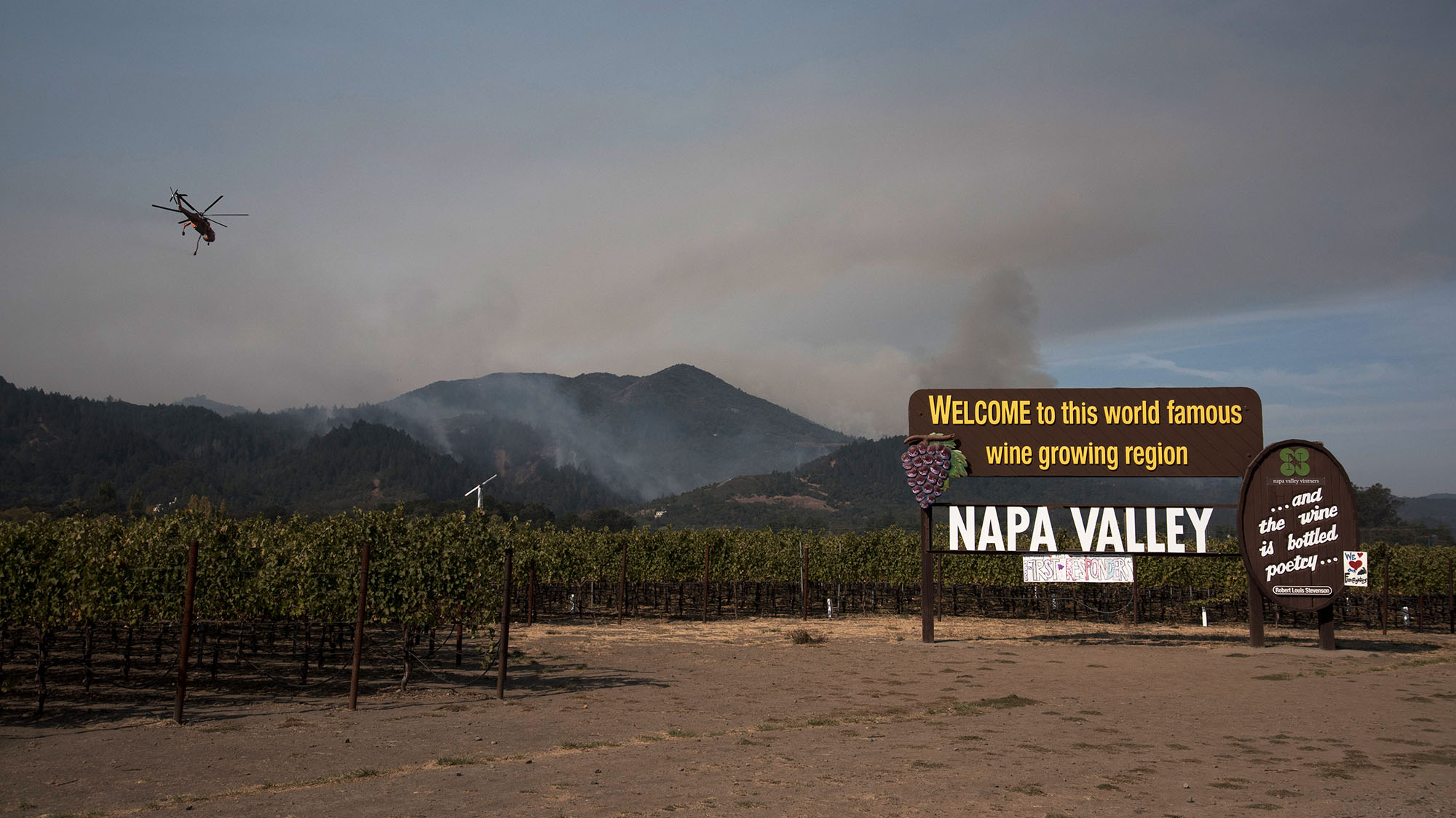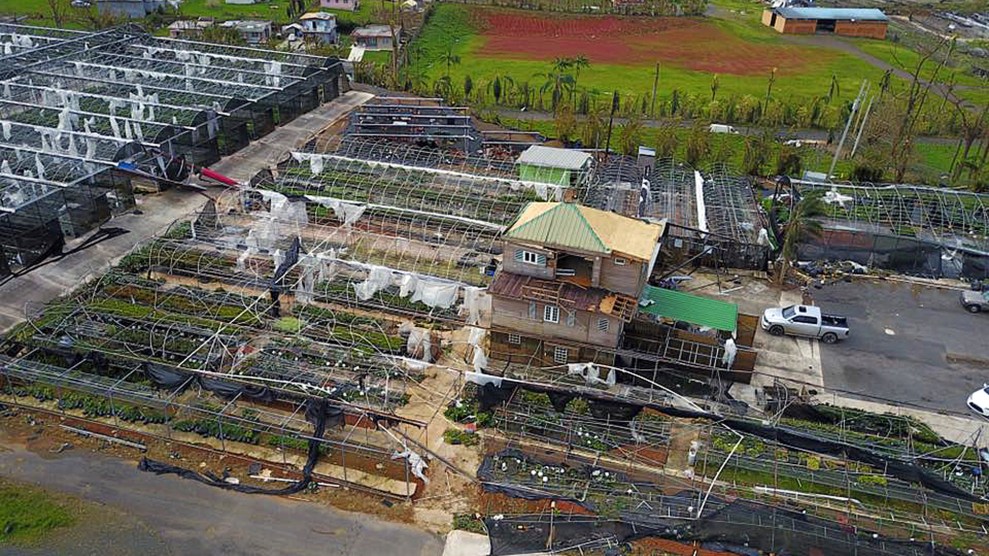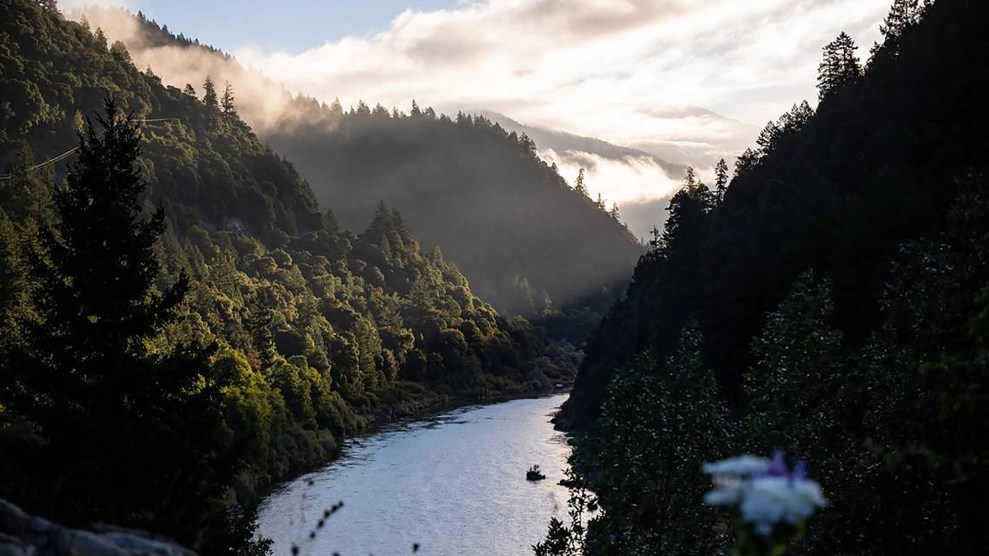The Atlas Peak Fire that sparked on Sunday October 8 has so far burned more than 50,000 acres in Napa County. The night it ignited, it roared down the eastern hills of Napa Valley and skirted the Silverado Trail, the site of some of the region’s most historic wineries. The blaze burned the Signorello Estate winery to the ground. It reduced the old farmhouse at Robert Sinskey Vineyards to rubble and singed its vines. But the large rectangular winery building was spared.
A week later, I visit the area with Mother Jones photographer editor Mark Murrmann. From the Sinskey winery’s gravel parking lot, we can still see fountains of smoke from the ongoing Nuns Fire Complex on the valley’s west side. The scar from the blaze has darkened the steep hill behind the estate, throwing into relief an untouched tree whose leaves have turned a brilliant turmeric. The entrance is flanked by a lemon tree on one side and a comma-shaped pond on the other, where flashy orange and white coi fish pilot around, oblivious to the near catastrophe of the previous week.
The tasting room is closed indefinitely, but deep inside the building, the cellar crew has returned. Cellarmaster Armando De Luna, a 32-year-old Napa native with a goatee whose sage-green baseball cap displays the name of his hometown, says returning to work has at least given him something to take his mind off of the region’s devastation: “Sitting at home and feeling hopeless is really shitty,” he says.
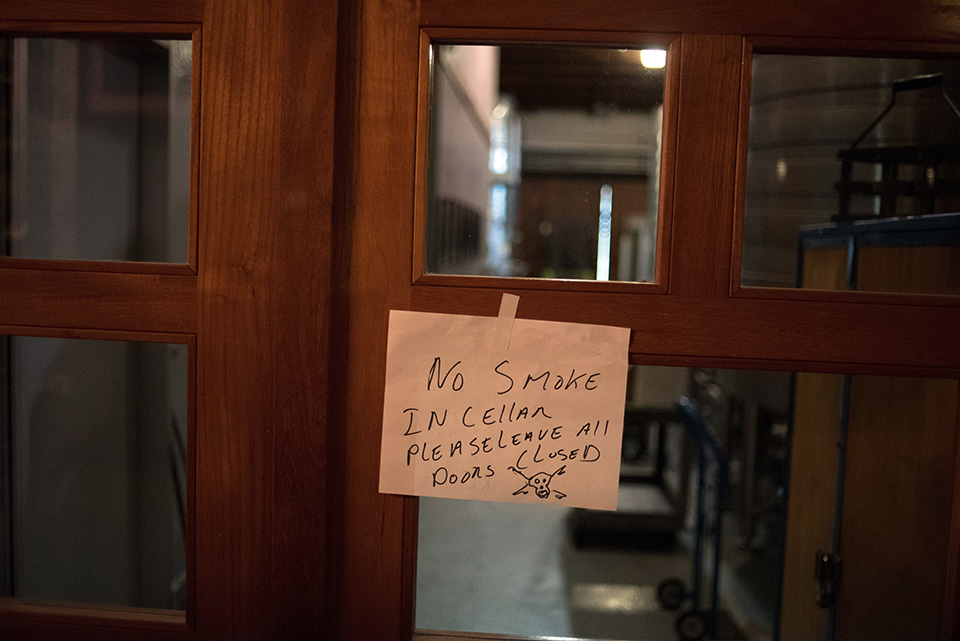
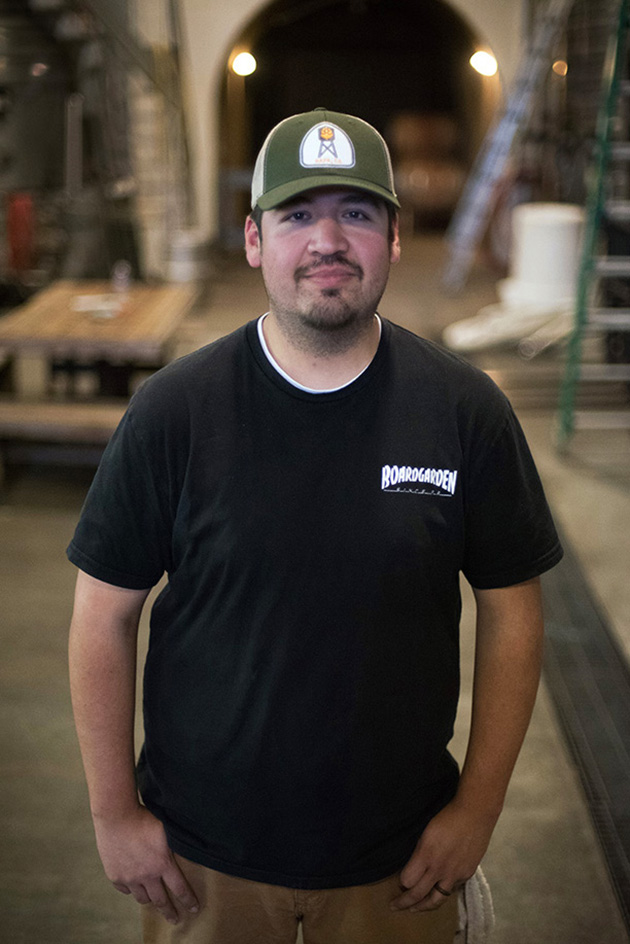
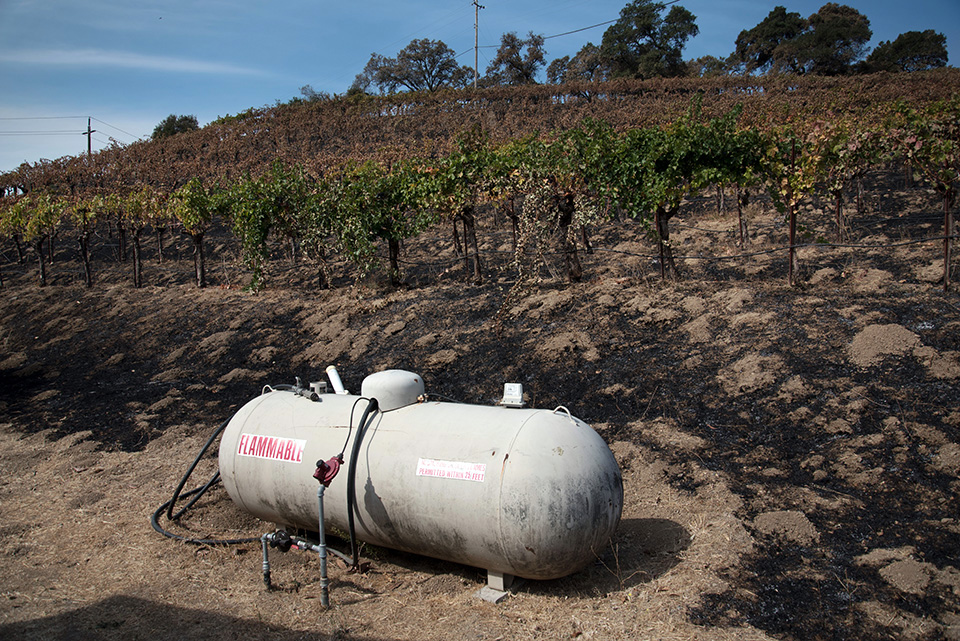
The night of the fire, De Luna lay awake in his Napa apartment next to his snoozing wife, Trisha, who’s eight-and-a-half months pregnant with the couple’s first child. An intense smell of smoke filtered through the windows. Worried the whole complex might be burning, De Luna jumped up to look outside, and then learned, via his phone’s Nixle emergency alerts, of the blaze on Atlas Peak.
When morning came, the couple was notified of a likely evacuation, and began packing up the gifts strewn around their apartment from their baby shower the week before. De Luna, kicking himself for not doing it sooner, took the new stroller out of the box and rushed to put it together. Trisha’s mother, who had lost power at her own house, arrived and sat glued to the images of vineyards burning on TV. At one point, De Luna recalls, she muttered that “a lot of winery workers are losing their jobs.” The words were like a jab in the gut. “I don’t have a job—that’s the first thing I thought of,” De Luna says. An image of the Sinskey winery flashed in his mind. “There’s no way it’s going to be there,” he thought.
The fire kept the Silverado Trail closed all week, but a friend who works for the city of Yountville was allowed back in, and he sent De Luna a string of photos of the Sinskey Winery in a text message. Cell service was still spotty and the photos came in slowly, one by one. “I had such a burst of adrenaline; my heart was racing and I was at the brink of tears,” De Luna recalls. Another photo loaded. The winery—where 80 percent of this year’s grape harvest was fermenting in large silver tanks or resting in French oak barrels deep underground—appeared untouched. The fire crept up towards a propane tank sitting right next to the building’s back entrance. The crew assumes that firefighters battled back the blaze so it didn’t cause an explosion.
When he was finally able to return, assistant winemaker Zach Gabbert, 37, worried that several days without aeration and stirring had spoiled the fermenting wine. But when he and head winemaker Jeff Virnig checked it, “it was like, oh shit, all these tanks survived,” Gebbert says. “They did good. We were shocked.”
The vineyards on the estate didn’t fare as well. Thirty-year-old Cabernet vines are torched, and though they’re still standing, the fire likely charred the root stocks, says Gabbert, and will need to be re-planted—a process that can take five years.
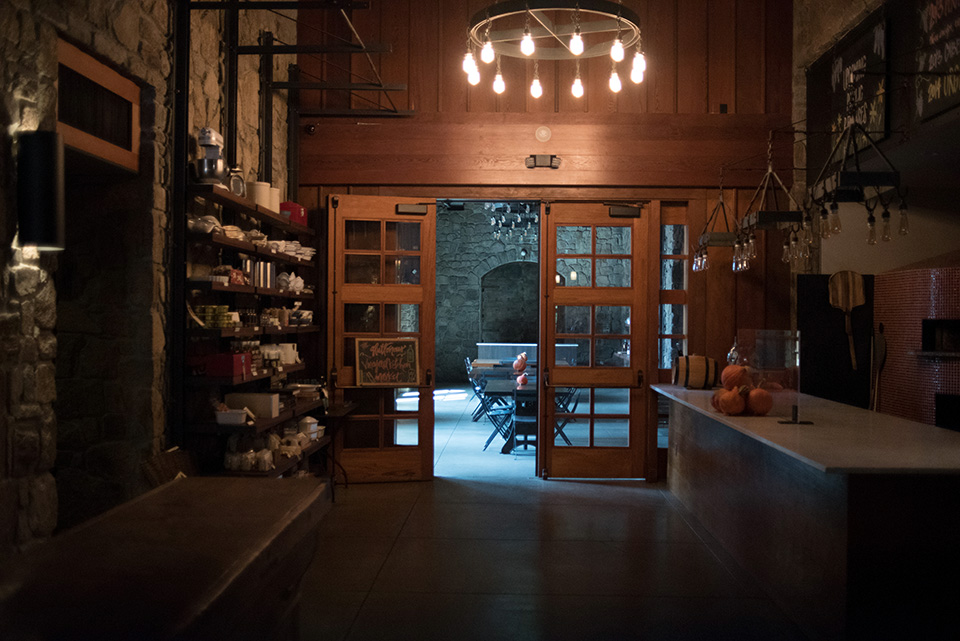
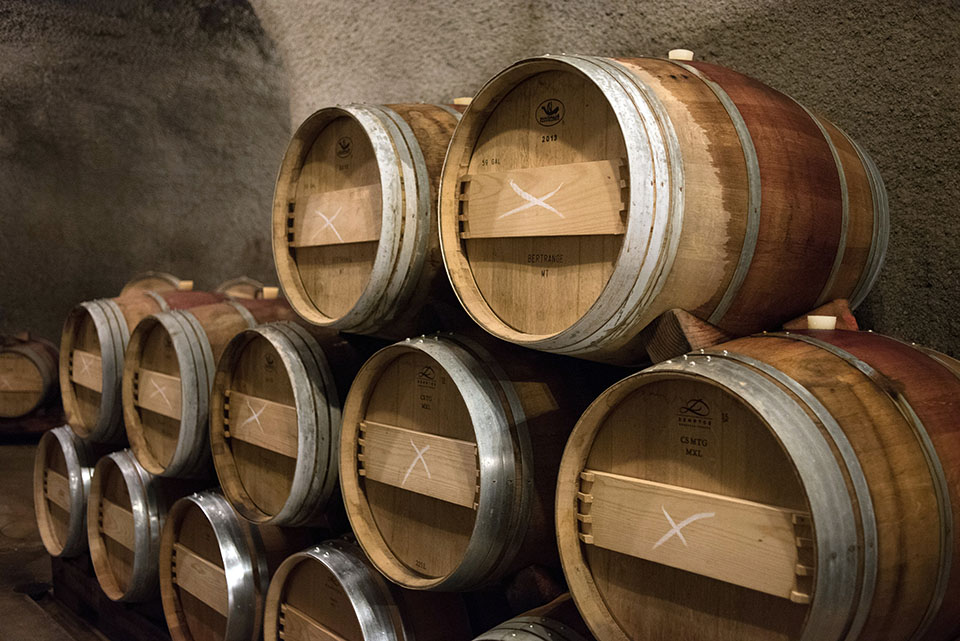
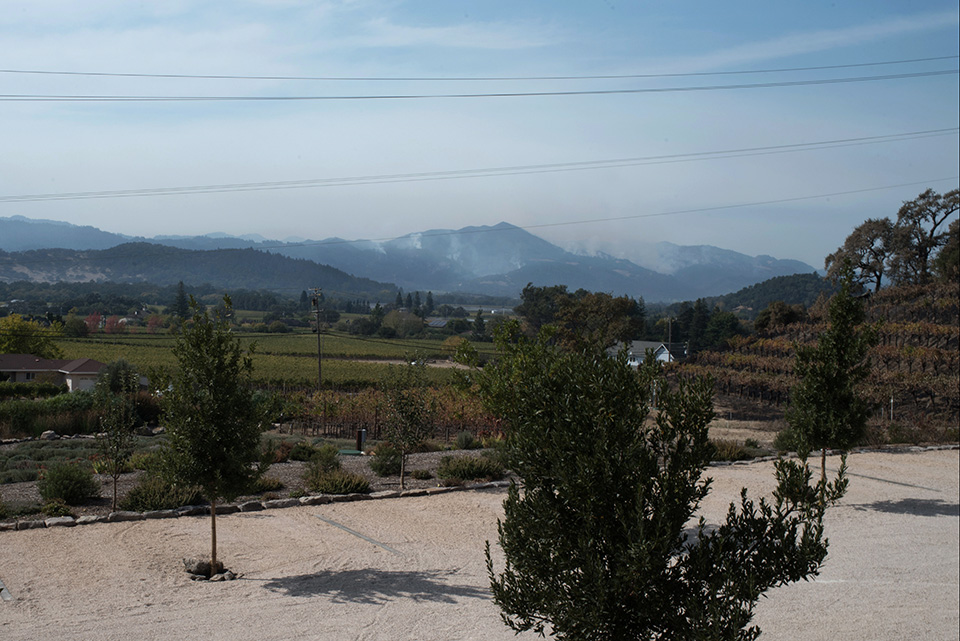
Cellar crew member Brandon Knowles, 33, wears a dust mask around his neck and clutches an empty white ceramic coffee mug as he reflects on the week’s events. “I’m just happy my friends are alive. Everyone I know is okay.” He says he’s been impressed with the way the community has joined together during this time of crisis, but worries that rebuilding won’t be easy for everyone. “It’s a wealthy area, but we’re all working class people here.”
De Luna echoes his concerns. “Not all of us make a ton of money out here,” he says. De Luna’s parents, who are of Mexican descent, also grew up in the area, and are active members of the local St. Apollinaris Church that’s providing food and shelter for those displaced by fires. “We get by with what we do, we work day to day to make that happen.” In 2016, tourists spent $1.92 billion in Napa Valley, and supported nearly 13,500 local jobs. “What are going to be the long-term effects if people don’t come back?” he worries.
In the meantime, there’s still a long list of tasks to complete to finish out this year’s harvest. De Luna leads us into a large maze of passageways that comprise the cave. It’s buried deep underground, right under the four-and-a-half acre vineyard. The air is cool and damp down here—a welcome relief from the smoke outside. He shows us the 12 barrels of this season’s biodynamic Merlot that he transferred from fermentation tanks into oak barrels this morning; they’ll age for 18 months.
Earlier this month, De Luna bought Knowles a bottle of Don Abraham reposado tequila, intending to give it to him on his birthday—which turned out to be the same day the Northern California firestorm ignited. Five days later, on Friday, the men sat down after work to open the bottle and share it with the crew. “We’re like, we’re here,” De Luna says. “We’re still standing and we’re all together. It was nice to sit with everybody and know that everybody’s okay.”
